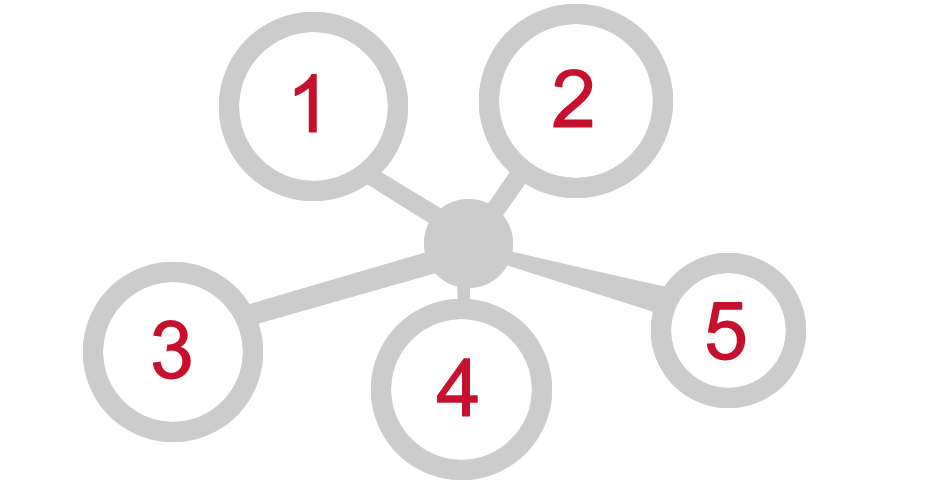
Geoff Wolf, EVP Client Strategy
Data is usually spoken in the context of collecting and organizing data, queries to gain intelligence and reporting to measure various key performance indicators. One rarely hears about data prowess together with creative design and marketing calls to action. This can only happen when both the left and right brain meet together in a combined environment.
Left brains think in a linear fashion, and that is essential in marketing database work. The right brain is able to work in a totally different dimension, one that is anything but linear. When brought together, good things happen. The following are some examples of data-driven calls to action and design ideas that have resulted from a holistic approach.
Here are three examples of profitable data-driven calls to action existing within the for-profit sector:
1. Backorder Notification Upsell
During a recent query into order fill rates and backorders to learn more about why they were exceeding expectations, it occurred to the creative folks at the table that an opportunity exists for an upsell message on the backorder notification. As the backorder would have to ship on the company’s nickel, why not offer a chance for customers to add merchandise without any additional shipping charge (with certain limits, of course). The offer became a triggered email campaign with a call to action for “Free Shipping – Add to Your Order.”
The data-driven math revealed that any backorder that took advantage of the call to action would generate enough incremental profit to pay for the entire shipping cost of the backorder, and then some.
2. Website “Google” Gift-Givers Special
While reviewing the attribution data from a recent analysis, the data and design team noticed orders that came out of the matchback process with a Google search tag of some type had a significantly lower average order value (AOV) than those without these tags. The data was consistent for all types of Google search, brand and non-brand, as well as between those who received a mailing and those who did not. This suggested that an offer to all traffic recognized as Google search, as they were completing the shopping cart, would be a good test.
The design team thought a pop-up tactic would offer a good format for a call to action. Further analysis showed the key metric driving the difference in value was around the number of lines/recipients per order, which pointed to gift-giving, a basic driver of value for this brand. The call to action that resulted was “Ship 4 Gift Addresses for Only $9.95” and could be served up to a random nth selection of URLs as they completed their orders.
3. Retirement Promotion Special
A recent survey of customers resulted in data showing 79 percent of customers were over the age of 55. More importantly, a word analysis of the hundreds of random comments entered into an open question turned up a significant relevant use of the word “retired.” Believing that “time” was perhaps top-of-mind for retired people, the design team developed a headline-testing strategy for an email campaign that would include a call to action using “time” as a central element. The variations could include headlines such as “Time Is on Your Side” and “What Time Is It?”
Within nonprofit organizations, marketing leads are often challenged to work both their right and left brain skills simultaneously. This is because in many instances they serve as both the creative director and the chief, if not sole, data analyst. Navigating this duality can be daunting, but there are examples to give nonprofit marketers strength that the same holistic approach is alive and attainable here, as well. Here are two examples of successful data-driven calls to action existing within the nonprofit sector:
4. Conference Marketing Data-Driven Content
A professional nonprofit association, in preparing simple pivot tables to analyze the last 10 years of registration data, noticed 20 percent to 30 percent of conference attendees come from the same three states year over year, regardless of timing or location of the conference itself. Using recent media clips, relevant topics were identified in those states. A special version of the conference brochure was produced to highlight specific sessions on the identified topics that lined up for each state. Emphasis was placed on highlighting speakers with credentials in the identified areas and those who had been quoted by local media on the topics.
5. Tying Membership to Conference Registration
A membership organization has an average markup of $250 between the member and non-member rate for their annual conference. In one case, approximately 100 registrants pay the additional fee, generating $25,000 in incremental revenue. This registration cohort does not include membership in the organization. These individuals typically would not join the organization in post-meeting appeals.
The organization considered a call to action that bundled membership within the non-member registration fee and reduced the markup. Data suggests this is a smart decision.
The call to action reflected a mark-up that was reduced from $250 to $100 to increase the perceived value of the offer and to reduce the number who opted out of receiving membership benefits. Special content was added to reinforce the value of the special offer.
Ample opportunities exist to leverage data when creating calls to action, promotions and general marketing strategy. All it takes is a holistic, team approach to take advantage of this world of opportunity.
By Geoff Wolf and Todd Von Deak
Target Marketing, October 2013

